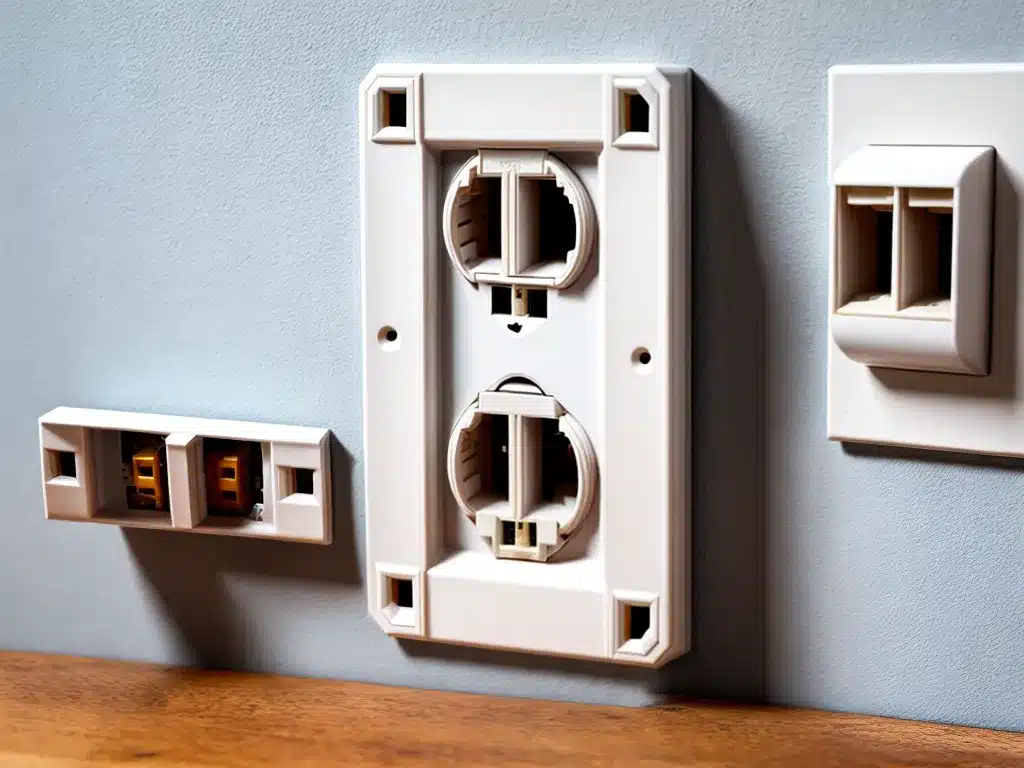
Having exposed electrical sockets in your home can be dangerous, especially if you have young children or pets. Thankfully, there are several easy and affordable ways to safely cover unused sockets to protect your family. In this comprehensive guide, I will walk you through the key steps and considerations for covering electrical outlets and recommend the best products to use.
Why You Should Cover Unused Sockets
There are a few important reasons why unused electrical sockets need to be covered:
-
Prevent electric shocks – Exposed sockets pose a serious risk of electrocution if fingers or objects come into contact with the live electrical current. Covering sockets eliminates this hazard.
-
Avoid fires – Inserting metal objects into sockets can cause dangerous shorts and sparks that can lead to fires. Covering sockets prevents accidental insertions.
-
Protect children – Curious kids may try to put their fingers or toys into empty sockets, which can cause severe electric shocks. Covering sockets shields kids from harm.
-
Deter pets – Pets like cats and dogs may try to investigate or chew on empty wall sockets. Covers block pets from making contact.
-
Improve aesthetics – Exposed sockets just look messy and unsightly. Covering them gives your walls a cleaner, more polished look.
Types of Socket Covers
There are a few different types of products you can use to safely cover unused electrical sockets:
Plastic Wall Plates
- Inexpensive and widely available
- Come in many colors and sizes
- Easy screw-on installation
- Can pop off if pulled hard
Sliding Panel Socket Covers
- Sturdy panels slide to cover socket
- Can’t be pulled off like wall plates
- More expensive than plastic plates
- Can be difficult to slide open
Self-Adhesive Covers
- Affix directly over sockets with adhesive
- Cheap and easy to install
- Adhesive wears out over time
- Can leave residue on walls when removed
Safety Socket Inserts
- Insert directly into socket to block access
- Prevent objects from being inserted
- More expensive than other options
- Can be removed by kids if not installed correctly
After comparing the pros and cons, plastic wall plates are typically the best option for covering most unused sockets in homes. They are inexpensive, easy to install, and come in various colors to match your walls.
How to Install Wall Plate Socket Covers
Installing plastic wall plate covers is a very simple process:
Materials Needed
- Wall plate socket covers
- Screwdriver
Step 1 – Turn Off Power
Start by turning off power to the socket at the breaker box. Verify power is off by plugging in a light or voltmeter. Working on live electrical sockets can cause severe shocks.
Step 2 – Remove Existing Plate
Unscrew and remove any existing wall plate covering the socket. Be sure to save the mounting screws.
Step 3 – Install New Cover
Line up the new wall plate cover and attach it using the existing screws. Make sure all holes align and the plate sits flush against the wall.
Step 4 – Restore Power
With the new cover securely installed, head back to the breaker box and restore power. Test that the socket is safely covered by attempting to insert an object.
And that’s it! With plastic wall plate covers installed over all unused electrical sockets, you can rest easy knowing your family is protected. Be sure to check covers periodically for any damage or loosening. Properly covering unused sockets is a simple and inexpensive way to dramatically improve home safety.
